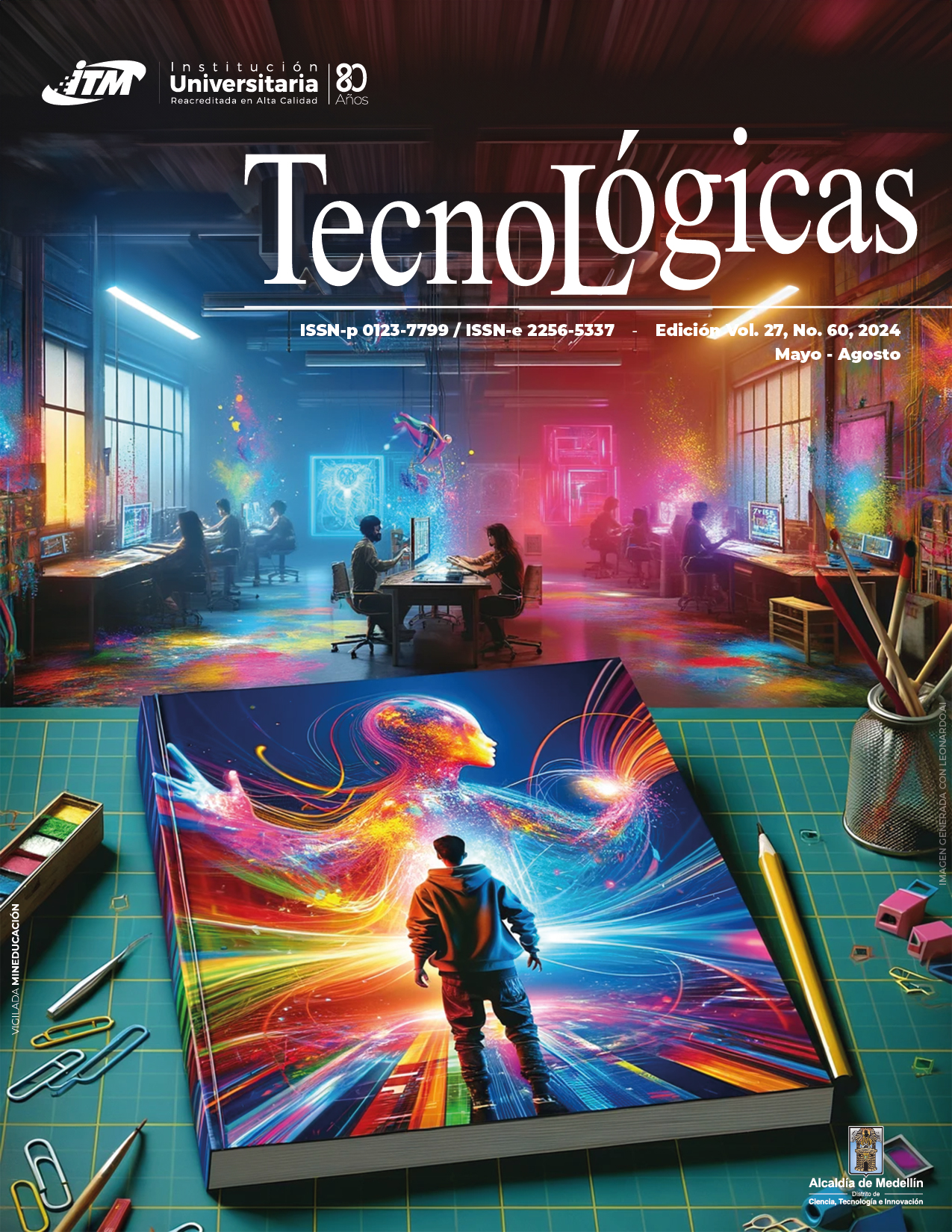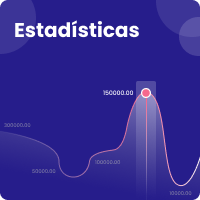Síntesis de imagen médica postcontraste en estudios de DCE-MRI de mama usando aprendizaje profundo
Resumen
El cáncer de mama es una de las principales causas de muerte en mujeres en el mundo, por lo que su detección de forma temprana se ha convertido en una prioridad para salvar vidas. Para el diagnóstico de este tipo de cáncer existen técnicas como la imagen de resonancia magnética dinámica con realce de contraste (DCE-MRI, por sus siglas en inglés), la cual usa un agente de contraste para realzar las anomalías en el tejido de la mama, lo que mejora la detección y caracterización de posibles tumores. Como limitación, los estudios de DCE-MRI suelen tener un costo alto, hay poca disponibilidad de equipos para realizarlos, y en algunos casos los medios de contraste pueden generar efectos adversos por reacciones alérgicas. Considerando lo anterior, este trabajo tuvo como objetivo el uso de modelos de aprendizaje profundo para la generación de imágenes sintéticas postcontraste en estudios de DCE-MRI. La metodología consistió en el desarrollo de una función de costo denominada pérdida en las regiones con realce de contraste que aprovecha el comportamiento de la captación del agente de contraste. Como resultado se entrenaron dos nuevas arquitecturas de aprendizaje profundo, las cuales hemos denominado G- RiedGAN y D-RiedGAN, para la generación de imágenes postcontraste en estudios de DCE-MRI, a partir de imágenes precontraste. Finalmente, se concluye que las métricas proporción máxima señal ruido, índice de similitud estructural y error absoluto medio muestran que las arquitecturas propuestas mejoran el proceso de síntesis de las imágenes postcontraste preservando mayor similitud entre las imágenes sintéticas y las imágenes reales, esto en comparación con los modelos base en el estado del arte.
Referencias bibliográficas
M. P. Jimenez Herrera, “Informe de Evento Cáncer de Mama y Cuello Uterino en Colombia 2018,” Instituto Nacional de Salud, Colombia, Versión 04, May 2018. [Online]. Available: https://bit.ly/3J1FcnV
M. Martín, A. Herrero, and I. Echavarría, “El cáncer de mama,” Arbor, vol. 191, no. 773, p. a234, Jun. 2015. https://doi.org/10.3989/arbor.2015.773n3004
IARC. “Data visualization tools for exploring the global cancer burden in 2022.” iarc.who. Accessed: Feb. 20, 2024. [Online.] Available: https://gco.iarc.who.int/today/en
X. Zhou et al., “A Comprehensive Review for Breast Histopathology Image Analysis Using Classical and Deep Neural Networks,” IEEE Access, vol. 8, pp. 90931-90956, May. 2020. https://doi.org/10.1109/ACCESS.2020.2993788
H. V. Guleria et al., “Enhancing the breast histopathology image analysis for cancer detection using Variational Autoencoder,” Int. J. Environ. Res. Public Health., vol. 20, no. 5, p. 4244, Feb. 2023. https://www.ncbi.nlm.nih.gov/pmc/articles/PMC10002012/
Instituto Nacional del Cáncer. “Tratamiento del cáncer de seno.” cancer.gov. Accessed: Feb. 20, 2024. [Online.] Available: https://www.cancer.gov/espanol/tipos/seno/paciente/tratamiento-seno-pdq
S. G. Macias, “Métodos de imagen en el estudio de la mama - Ecografía mamaria,” Editorial Medica Panamericana, Bogotá, Colombia, Módulo 1, 2019. https://bit.ly/4aFIg4y
P. E. Freer, “Mammographic breast density: Impact on breast cancer risk and implications for screening,” Radiographics, vol. 35, no. 2, pp. 302–315, Mar. 2015. https://doi.org/10.1148/rg.352140106
P. Campáz-Usuga, R. D. Fonnegra, and C. Mera, “Quality Enhancement of Breast DCE-MRI Images Via Convolutional Autoencoders,” in 2021 IEEE 2nd International Congress of Biomedical Engineering and Bioengineering (CI-IB&BI), Bogotá D.C., Colombia, 2021, pp. 1-4. https://doi.org/10.1109/CI-IBBI54220.2021.9626097
Y. M. Rodríguez Marcano, I. González, H. Palencia, M. Sandoval, and L. León, “Mamografía espectral con realce de contraste. Nuestra experiencia,” Revista Venezolana de Oncologia, vol. 26, no. 4, pp. 743–751, Dec. 2014. https://www.redalyc.org/articulo.oa?id=375633971003
I. Pérez-Zúñiga, Y. Villaseñor-Navarro, M. P. Pérez-Badillo, R. Cruz-Morales, C. Pavón-Hernández, and L. Aguilar-Cortázar, “Resonancia magnética de mama y sus aplicaciones,” Gaceta Mexicana de Oncologia, vol. 11, no. 4, pp. 268–280, 2012. https://www.elsevier.es/es-revista-gaceta-mexicana-oncologia-305-articulo-resonancia-magnetica-mama-sus-aplicaciones-X1665920112544919
C. Balleyguier et al., “New potential and applications of contrast-enhanced ultrasound of the breast: Own investigations and review of the literature,” Eur. J. Radiol., vol. 69, no. 1, pp. 14–23, Jan. 2009. https://doi.org/10.1016/J.EJRAD.2008.07.037
R. Valenzuela, O. Arevalo, A. Tavera, R. Riascos, E. Bonfante, and R. Patel, “Imágenes del depósito de gadolinio en el sistema nervioso central,” Revista Chilena de Radiologia, vol. 23, no. 2, pp. 59–65, Jul.2017. https://doi.org/10.4067/S0717-93082017000200005
F. Gao, T. Wu, X. Chu, H. Yoon, Y. Xu, and B. Patel, “Deep Residual Inception Encoder-Decoder Network for Medical Imaging Synthesis,” IEEE J. Biomed. Health Inform., vol. 24, no. 1, pp. 39–49, Jan. 2020. https://doi.org/10.1109/JBHI.2019.2912659
F. Gao et al., “SD-CNN: A shallow-deep CNN for improved breast cancer diagnosis,” Computerized Medical Imaging and Graphics, vol. 70, pp. 53–62, Dec. 2018. https://doi.org/10.1016/j.compmedimag.2018.09.004
K. Wu et al., “Image synthesis in contrast MRI based on super resolution reconstruction with multi-refinement cycle-consistent generative adversarial networks,” J. Intell. Manuf., vol. 31, no. 5, pp. 1215–1228, Jun. 2020. https://doi.org/10.1007/s10845-019-01507-7
E. Kim, C. Hwan-Ho, J. Kwon, O, Young-Tack, E. S. Ko, and H. Park, “Tumor-Attentive Segmentation-Guided GAN for Synthesizing Breast Contrast-Enhanced MRI Without Contrast Agents,” IEEE Journal of Translational Engineering in Health and Medicine, vol. 11, pp. 32-43, Nov. 2023. https://doi.org/10.1109/JTEHM.2022.3221918
Y. Jiang, Y. Zheng, W. Jia, S. Song, and Y. Ding, “Synthesis of contrast-enhanced spectral mammograms from low-energy mammograms using cGAN-based synthesis network,” in Medical Image Computing and Computer Assisted Intervention – MICCAI 2021, M. de Bruijne, et al., Eds. Cham: Springer International Publishing, 2021, pp. 68–77. https://doi.org/10.1007/978-3-030-87234-2_7
D. Huangz, and M. Feng, “Understanding Deep Convolutional Networks for Biomedical Imaging: A Practical Tutorial,” in 2019 41st Annual International Conference of the IEEE Engineering in Medicine and Biology Society (EMBC), Berlin, Germany, 2019, pp. 857-863. https://doi.org/10.1109/EMBC.2019.8857529
C. Shorten, and T. M. Khoshgoftaar, “A survey on Image Data Augmentation for Deep Learning,” J. Big Data, vol. 6, no. 1, Jul. 2019. https://doi.org/10.1186/s40537-019-0197-0
A. Beers et al., “High-resolution medical image synthesis using progressively grown generative adversarial networks,” 2018, ArXiv: 1805.03144. https://arxiv.org/abs/1805.03144
T. Shen, C. Gou, J. Wang, and F. -Y. Wang, “Collaborative Adversarial Networks for Joint Synthesis and Segmentation of X-ray Breast Mass Images,” in 2020 Chinese Automation Congress (CAC), Shanghai, China, 2020, pp. 1743-1747. https://doi.org/10.1109/CAC51589.2020.9326848
Y. Pang, J. Lin, T. Qin, and Z. Chen, “Image-to-Image Translation: Methods and Applications,” IEEE Trans. Multimedia, vol. 24, pp. 3859–3881, Sep. 2021. https://doi.org/10.1109/TMM.2021.3109419
M. Carmen, J. Lizandra, C. Monserrat, A. José, and H. Orallo, “Síntesis de Imágenes en Imagen Médica,” Universidad Politécnica de Valencia, 2003. https://josephorallo.webs.upv.es/escrits/ACTA3.pdf
A. Anwar “Difference between AutoEncoder (AE) and Variational AutoEncoder (VAE),” towardsdatascience.com Accessed: Feb. 20, 2024. [Online]. Available: https://towardsdatascience.com/difference-between-autoencoder-ae-and-variational-autoencoder-vae-ed7be1c038f2
W. Weng, and X. Zhu, “INet: Convolutional Networks for Biomedical Image Segmentation,” IEEE Access, vol. 9, pp. 16591-16603, 2021. https://doi.org/10.1109/ACCESS.2021.3053408
I. J. Goodfellow et al., “Generative Adversarial Networks,” Advances in Neural Information Processing Systems, vol. 14, Jun. 2014. https://doi.org/https://doi.org/10.48550/arXiv.1406.2661
I. C. Moreira, I. Amaral, I. Domingues, A. Cardoso, M. J. Cardoso, and J. S. Cardoso “INbreast: toward a full-field digital mammographic database,” Acad. Radiol., vol. 19, no. 2, pp. 236-248, Feb. 2012. https://doi.org/10.1016/j.acra.2011.09.014
F. Gao, T. Wu, X. Chu, H. Yoon, Y. Xu, and B. Patel, “Deep Residual Inception Encoder-Decoder Network for Medical Imaging Synthesis,” IEEE Journal of Biomedical and Health Informatics, vol. 24, no. 1, pp. 39–49, Apr. 2020. https://doi.org/10.1109/JBHI.2019.2912659
M. Mori et al., “Feasibility of new fat suppression for breast MRI using pix2pix,” Jpn. J. Radiol., vol. 38, no. 11, pp. 1075–1081, Nov. 2020. https://doi.org/10.1007/s11604-020-01012-5
P. Isola, Z. Jun-Yan, T. Zhou, and A. A. Efros, “Image-to-Image Translation with Conditional Adversarial Networks,” in 2017 IEEE Conference on Computer Vision and Pattern Recognition (CVPR), Honolulu, HI, USA, 2017, pp. 5967-5976. https://doi.org/10.1109/CVPR.2017.632
P. Wang et al., “Synthesizing the First Phase of Dynamic Sequences of Breast MRI for Enhanced Lesion Identification,” Front. Oncol., vol. 11, Dec. 2021. https://doi.org/10.3389/fonc.2021.792516
Z. Sani, R. Prasad, and E. K. M. Hashim, “Breast Cancer Detection in Mammography using Faster Region Convolutional Neural Networks and Group Convolution,” ETE J. Res., pp. 1–17, May 2024. https://doi.org/10.1080/03772063.2024.2352643
M. Fan et al., “Generative adversarial network-based synthesis of contrast-enhanced MR images from precontrast images for predicting histological characteristics in breast cancer,” Phys. Med. Biol., vol. 69, no. 9, p. 095002, Apr. 2024. https://doi.org/10.1088/1361-6560/ad3889
O. Young-Tack, E. Ko, and H. Park, “TDM-Stargan: Stargan Using Time Difference Map to Generate Dynamic Contrast-Enhanced Mri from Ultrafast Dynamic Contrast-Enhanced Mri,” in 2022 IEEE 19th International Symposium on Biomedical Imaging (ISBI), Kolkata, India, 2022, pp. 1-5. https://doi.org/10.1109/ISBI52829.2022.9761463
T. Fujioka et al., “Proposal to improve the image quality of short-acquisition time-dedicated breast positron emission tomography using the Pix2pix generative adversarial network,” Diagnostics, vol. 12, no. 12, p. 3114, Dec. 2022. https://doi.org/10.3390/diagnostics12123114
G. Jiang, Y. Lu, J. Wei, and Y. Xu, “Synthesize Mammogram from Digital Breast Tomosynthesis with Gradient Guided cGANs,” Springer International Publishing, D. Shen et al., Eds. vol. 11769, Oct. 2019. https://doi.org/10.1007/978-3-030-32226-7_89
B. Yu, L. Zhou, L. Wang, Y. Shi, J. Fripp, and P. Bourgeat, “Ea-GANs: Edge-Aware Generative Adversarial Networks for Cross-Modality MR Image Synthesis,” IEEE Transactions on Medical Imaging, vol. 38, no. 7, pp. 1750–1762, Jan. 2019. https://doi.org/10.1109/TMI.2019.2895894
B. H. Menze et al., “The Multimodal Brain Tumor Image Segmentation Benchmark (BRATS),” IEEE Transactions on Medical Imaging, vol. 34, no. 10, pp. 1993-2024, Dec. 2015. https://doi.org/10.1109/TMI.2014.2377694
D. Duque-Arias et al., “On power jaccard losses for semantic segmentation,” in Proceedings of the 16th International Joint Conference on Computer Vision, Imaging and Computer Graphics Theory and Applications, Setúbal, Portugal, 2021, pp. 561–568. https://doi.org/10.5220/0010304005610568
M. Berman, A. R. Triki, and M. B. Blaschko, “The Lovasz-Softmax Loss: A Tractable Surrogate for the Optimization of the Intersection-Over-Union Measure in Neural Networks,” in 2018 IEEE/CVF Conference on Computer Vision and Pattern Recognition, Salt Lake City, UT, USA, 2018, pp. 4413-4421. https://doi.org/10.1109/CVPR.2018.00464
B. Xu, N. Wang, T. Chen, and M. Li, “Empirical Evaluation of Rectified Activations in Convolutional Network,” 2015, arXiv:1505.00853. http://arxiv.org/abs/1505.00853
A. Horé, and D. Ziou, “Image Quality Metrics: PSNR vs. SSIM,” in 2010 20th International Conference on Pattern Recognition, Istanbul, Turkey, 2010, pp. 2366-2369. https://doi.org/10.1109/ICPR.2010.579
Descargas
Derechos de autor 2024 TecnoLógicas

Esta obra está bajo una licencia internacional Creative Commons Atribución-NoComercial-CompartirIgual 4.0.
| Estadísticas de artículo | |
|---|---|
| Vistas de resúmenes | |
| Vistas de PDF | |
| Descargas de PDF | |
| Vistas de HTML | |
| Otras vistas | |
Datos de los fondos
-
Instituto Tecnológico Metropolitano
Números de la subvención P20213









